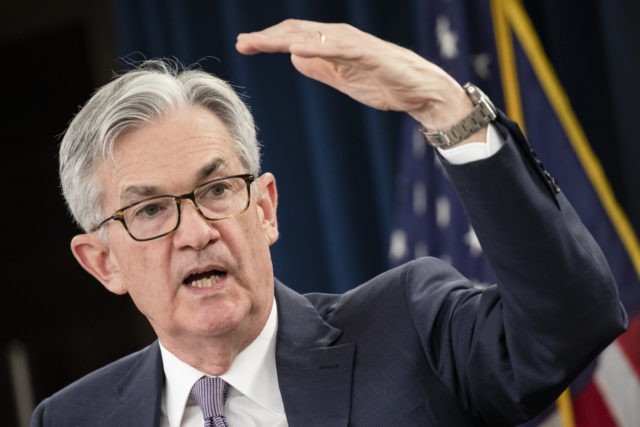A rare rift among Federal Reserve officials came to light in the minutes of the central bank’s June meeting that were released Wednesday.
Fed officials agreed that it is important that the central bank “be well positioned to reduce the pace of asset purchases” if high inflation proves less transitory than forecast or the labor market recovers more quickly than expected.
But they do not agree on how to go about reducing those asset purchases.
The minutes show that several Fed officials think it would be a good idea for the Fed to scale down the purchases of mortgage-backed securities more quickly than the purchases of Treasuries in light of the extreme gains in housing prices seen over the past year.
But several other Fed officials dispute this and argued at the meeting that bringing both down together would better align with the Fed’s earlier communications and market expectations. Some of these Fed officials think that the mortgage-backed security purchases ease credit generally, facilitating business expansion and investment, but are not directly related to the drive-up in home prices.
This debate was not resolved at the June meeting. Instead, the officials agreed to continue to discuss the options in “coming meetings.”
Fed officials rarely have such internal disputes so publicly revealed.
But even prior to the minutes, there were hints of this divide growing among officials. Dallas Fed President Robert Kaplan saying last week that he favored pulling back on the purchases “sooner rather than later.”
Yet San Francisco Fed President Mary Daly, in an interview with The Associated Press, said last week that it would be “appropriate” to consider tapering later this year or early next year. But she cautioned that the economy is “far from full employment,” one of the Fed’s two goals, along with price stability.
The Fed is buying $80 billion a month in Treasury securities and $40 billion a month in mortgage-backed bonds to keep longer-term interest rates low and encourage more borrowing and spending. It has said that it will keep making the purchases until the economy makes “substantial further progress” toward its goals of full employment and an inflation rate slightly above 2 percent.
The Fed officials acknowledged that the economy is moving closer to their goals of maximum employment and average inflation of two percent much faster than they expected. As a result, several officials think that the conditions for reducing bond purchases will be met earlier than expected.
A “substantial majority” agreed inflation risks are “tilted to the upside,” which is Fed-speak for the idea that it is more likely inflation continues to come in hotter than expected than cooler than expected. The hotter than expected inflation has added urgency to the Fed’s planning for the eventual taper of bond purchases, although most analysts do not think that will actually occur until late this year or early next year.
Many analysts expect an announcement of the change potentially occurring in late August at the Fed’s annual conference at Jackson Hole, Wyoming.
In a statement issued after its June 15-16 meeting, Fed officials signaled that they would potentially dial back their low-interest rate policies sooner than they had previously indicated. The policymakers forecast that they would hike the Fed’s benchmark short-term interest rate twice by the end of 2023. In March, they had indicated no rate hikes would occur before 2024.
An earlier rate hike suggests that the Fed could move up the timetable for reducing its bond purchases.
—The Associated Press contributed to this report.

COMMENTS
Please let us know if you're having issues with commenting.